Native Americans in Indiana
American Indian/Alaska Native (AI/AN) population of Indiana as of 2010: 55,767 (Up 22% since 2000) (Source: U.S. Census Bureau; includes persons of mixed race).
There are many tribal members of federally recognized tribes that live in Indiana, approximately 25,000.
At the current date, there are two tribes that have land in Indiana.
The Pokagon Band of Potawatomi received a small portion of their land back from their removal in Indiana. The Pokagon Band of Potawatomi is a federally recognized tribe of 573 federally recognized tribes in the United States. The Pokagon Band of Potawatomi on November 18, 2016, received 166 acres of land in trust in South Bend, Indiana (www.pokagon.com/government/indiana-land-restoration)
The Pokagon Band of Potawatomi were party to 11 treaties with the federal government, with the major land cession being under the 1833 Treaty of Chicago. During the ‘Indian Removals’, many Potawatomi bands were moved west, but Chief Leopold Pokagon negotiated to keep his Potawatomi band of 280 people in southwestern Michigan. They were the only Potawatomi band who did not remove to the west of the Mississippi River.
The second tribe that has land in Indiana is the Miami Tribe of Oklahoma. The tribe was given land to put a Cultural Extension Office for their tribal members living in Indiana to attend specific gatherings, ceremonies and education events at this office located in Fort Wayne, Indiana. [Above information from the Indiana Native American Indian Affairs Commission - INAIAC: Home]
- Native American Tribes Living in Indiana Prior to Removal
Miami A majority of Native Americans living in Indiana belonged to the Miami tribe. The Miami tribe was part of the Algonquian group of Native Americans. The Algonquian group also included the Delaware, Potawatomi, Kickapoo, and Shawnee tribes.
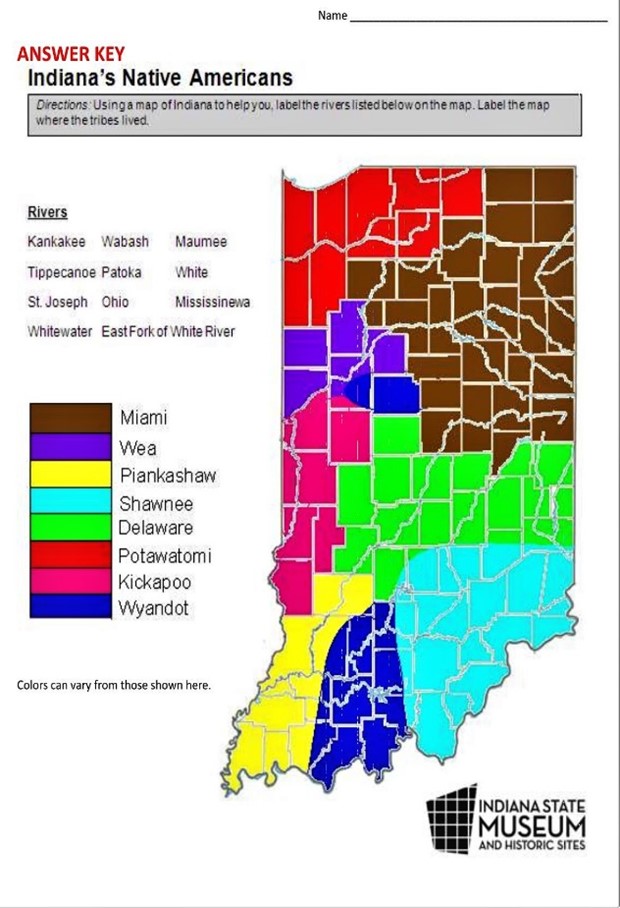
From the Indiana State Museum and Historic Sites - The Myaamia (Miami)
From the Miami Websites: About - Miamination.com and History – Aacimotaatiiyankwi
In the Miami language, the Miami Tribe's name for itself is Myaamia, which means "the Downstream People." The story of the Myaamia begins at a place we call Saakiiweeyonki,
near where the St. Joseph's River empties into Lake Michigan.From the village at Saakiiweeyonki, they descended into the Waapaahšiki Siipiiwi (Wabash River) valley building communities at major confluences and portages from Kiihkayonki (Ft. Wayne, Indiana) downstream to Aciipihkahkionki (Vincennes, Indiana). Together these villages maintained a common language, hunting, and farming cultural practices. They often came together to collectively defend themselves and negotiate peace with neighboring tribes and Europeans.
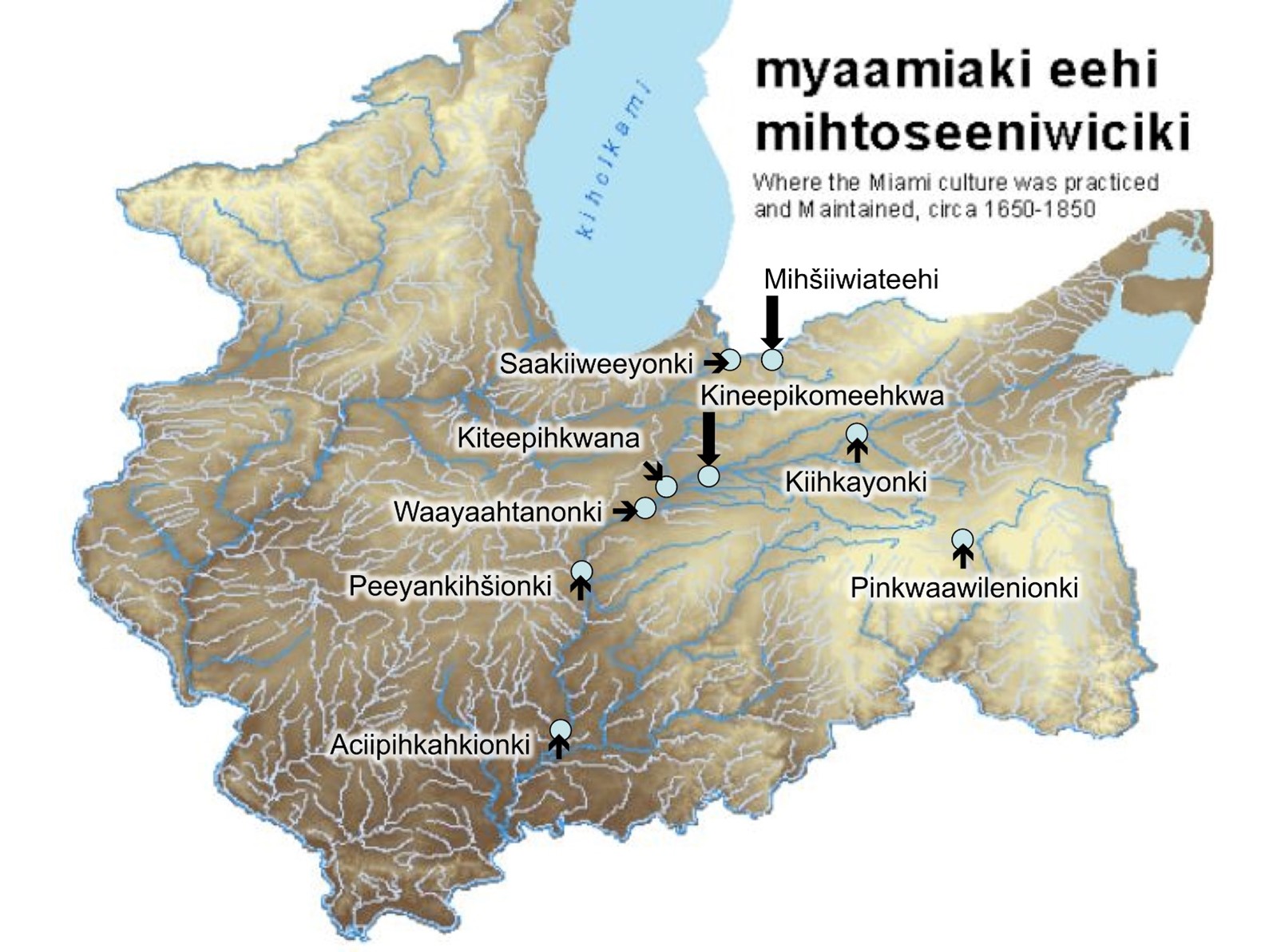
Map 1: Myaamionki originally constructed by Brett Governanti.[3] Village sites by George Ironstrack from
Walking Myaamionki – Aacimotaatiiyankwi
For more information: The Myaamia Center [Myaamia Center - Miami University (miamioh.edu)], a Miami Tribe of Oklahoma initiative located within an academic setting at Miami University in Oxford, OH, serves the needs of the Myaamia people, Miami University, and partner communities through research, education, and outreach that promote Myaamia language, culture, knowledge, and values. - šaawanwaki (Shawnee)
Tekoomsē (Tecumseh) and Tenskwatawa (The Prophet) were Shawnee brothers who mobilized the American Indians in the Northwest Territory to fight the Americans. The Brother's father was killed in battle against American colonists in 1774. Their older brother Cheeseekau, a noted war chief, died fighting Americans in 1792.
Major-General Isaac Brock, British commander of Upper Canada wrote about Tekoomsē:
A more sagacious or a more gallant warrior does not, I believe, exist. He was the admiration of everyone who conversed with him.
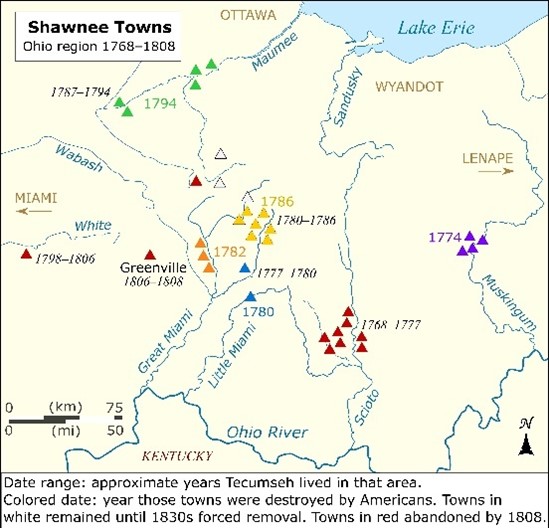
Map of Shawnee towns in the ‘Ohio Region’ from 1768 to 1808, indicating where Tecumseh lived.
Kevin1776 CC BY-SA 4.0 - Own work.
Sources: Tanner, Helen Hornbeck, ed. (1987). Atlas of Great Lakes Indian History (Norman: University of Oklahoma Press), for town locations and dates of destruction.
Sugden, John (1997). Tecumseh: A Life (New York: Henry Holt and Company), for years of Tecumseh's residences. - Pokagon Band (Potawatomi)
A federally recognized Potawatomi-speaking tribe based in southwestern Michigan and northeastern Indiana. Tribal government functions are in Dowagiac, Michigan. They occupy reservation lands in a total of ten counties in the area. The Pokagon are descendants of the residents of allied Potawatomi villages that were historically located along the St. Joseph, Paw Paw and Kalamazoo rivers. They were the only Potawatomi band (280 people) - based on negotiations by – Chief Leopold Pokagon - to gain permission from the United States government to remain in Michigan after Indian removal in the 1830s.
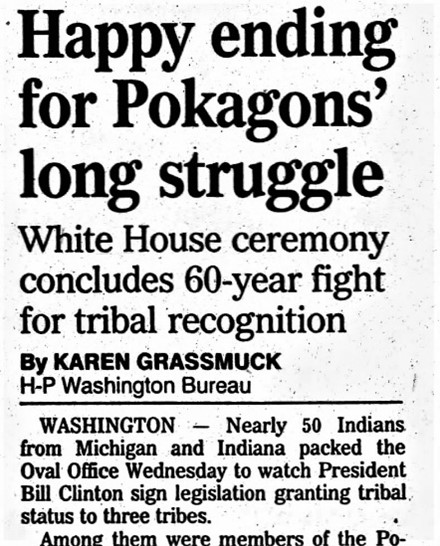
The Herald-Palladium Benton Harbor, Michigan · Thursday, September 22, 1994
The Pokagons, 1683-1983: Catholic Potawatomi Indians of the St. Joseph River valley
A reference on the Potowatomi - By Clifton, James A Published 1984
https://archive.org/details/pokagons168319830000clif/page/n3/mode/2up
Well Known Native American Leaders in Indiana
- Me-she-ke-no-quah (Chief Little Turtle)
(c.1747 — July 14, 1812)
A Sagamore (Chief) of the Miami Indians.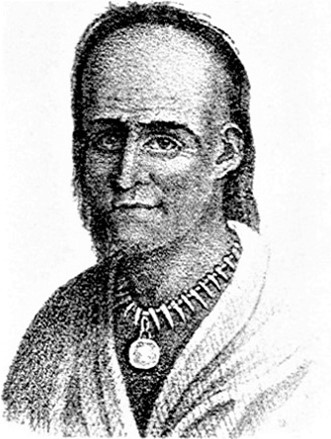
Unknown author - lithograph in Public Domain reputedly based upon a lost portrait by Gilbert Stuart Destroyed when the British burned Washington DC in 1814
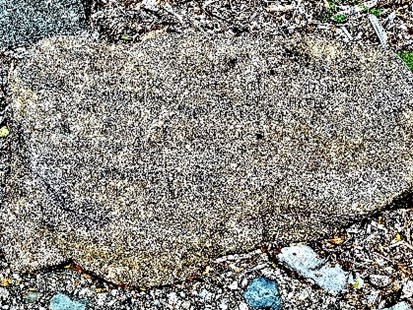
Chief Little Turtle Memorial Stone | Courtesy of Tom Whiteman
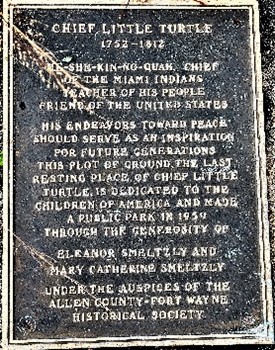
Chief Little Turtle Memorial Plaque | Courtesy of Tom Whiteman
- Chief Francis Godfroy
Half French and Half Myaamia. Born at Little Turtle's village (now Ft. Wayne, Indiana). Godfroy was one of the leaders in a Miami counterattack on an American army led by Lieutenant Colonel John Campbell in the Battle of the Mississinewa on December 17–18, 1812.
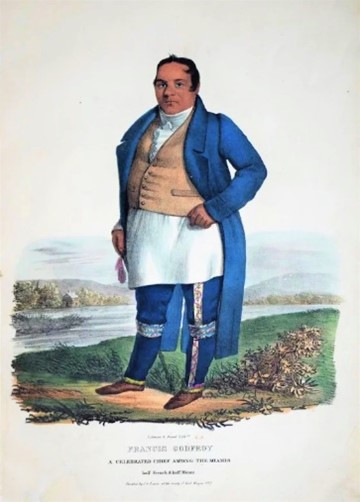
WisconsinHistory.org in Public Domain
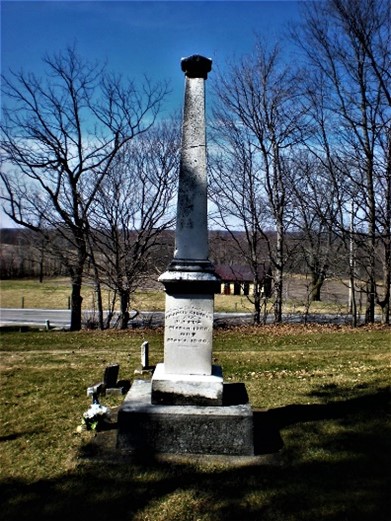
Grave of Chief Francis Godfroy | Sara_Stierch_A (CC By 4.0)
- Weyapiersenwah (Blue Jacket)
(c. 1743 – 1810)
A war chief of the Shawnee people, known for his militant defense of Shawnee lands in the Ohio Country. Perhaps the preeminent American Indian leader in the Northwest Indian War, in which a pantribal confederacy fought several battles with the nascent United States, he was an important predecessor of the famous Shawnee leader Tecumseh. Little is known of Blue Jacket's early life. He first appears in written historical records in 1773, when he was already a grown man and a war chief.
- Tekoomsē (Tecumseh)
(c. 1768 – October 5, 1813)
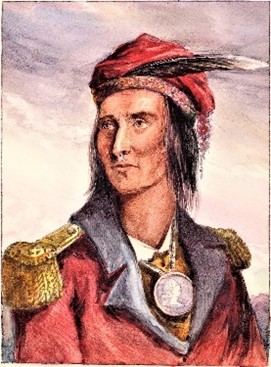
Public Domain in Canada
Attributed to Owen Staples (1866–1949)
Based on the engraving published by Benson John Lossing. https://www.torontopubliclibrary.ca/detail.jsp?Entt=RDMDC-JRR3358&R=DC-JRR3358Tecumseh led about 530 warriors in the Siege of Detroit.
- Tenskwatawa (The Prophet)
(c. Jan. 1775 – Nov. 1836)
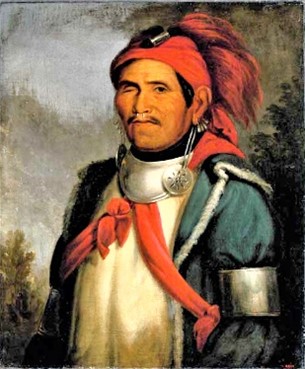
Painting by Hungarian - Charles Bird King From Book - History of the Indian Tribes of North America, by Mckenney and Hall, published in 1872 - Public Domain.
Younger brother of Tecumseh.
Influential spiritual leader - Leopold Pokagon
(c. 1775 - 1841)
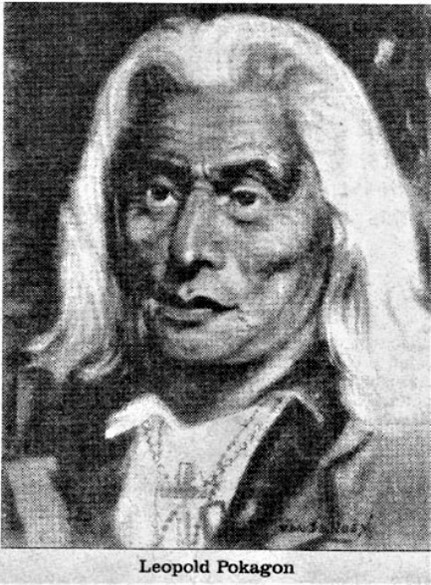
Painting from 1830’s by Van Senden (19th‐century Dutch painter). Source: http://www.earlychicago.com/encyclopedia.php?letter=p. Public Domain
Taking over from Topinbee, who became the head of the Potawatomi of the Saint Joseph River Valley in Michigan,a band that later took his name.
- Simon Pokagon
(c. 1830 - January 28, 1899)
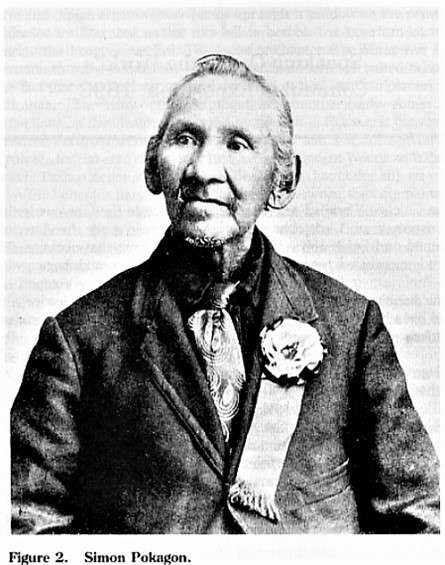
Published by C. H. Engle (Company) of Hartford, Michigan. (Public Domain)
Simon Pokagon son of Chief Leopold Pokagon.
Born near Bertrand in southwest Michigan Territory.
Recognized Native American authors of the nineteenth century.
His book "Queen of the Woods", copyright 1899.
